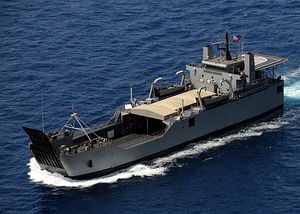As I have written earlier, the Philippines has been in the process of constructing a new naval base opposite the disputed Spratly Islands in the South China Sea (See: “A ‘New’ Philippine Navy Base in the South China Sea?”).
Though Philippine armed forces chief General Gregorio Catapang, Jr. recently indicated that the base was a “top priority,” he also admitted that construction had been delayed by funding bottlenecks and the infrastructure there was still very much a work in progress.
On June 2, IHS Jane’s reported that the Philippine Navy (PN) had released images confirming that it had completed the first major access road to a naval pier being built there – a clear sign of progress. According to the PN, the road, which is part of what is described as a three-year development to make Oyster Bay a major naval anchorage for the Philippines as well as visiting allies, would now allow the construction of the naval pier to move ahead at a greater pace.
IHS Jane’s also reported that the project development program report describes a facility that will eventually have a secure helipad, an amphibious jungle warfare training center in the surrounding area, a coast watch radar station and communications center on the hills overlooking the site, a network of armed outposts and monitoring systems, and potentially an area forward joint operations center for visiting “security and treaty” partners of the Philippines. More specific details are still publicly unavailable as many of these plans remain classified.
Once completed, Philippine officials had previously indicated that the base would be able to hold a few large naval vessels, including a few U.S. ones as well. And as I noted in my previous piece, beyond the infrastructure mentioned, military officials have also stressed that possessing a base so close to the South China Sea would enable the armed forces of the Philippines to drastically shorten the travel time of its vessels and minimize fuel and other logistical costs, as well as boost the morale of troops stationed nearby.
While the progress being made on the new naval base is promising, it remains to be seen whether the facility will be completed in time. The timing matters because of China’s rapid land reclamation activities, refusal to participate in the case Manila filed against it with the arbitral tribunal at The Hague, and its out-muscling of Philippine ships and aircraft in recent weeks, suggests that Beijing is quickly trying to change the status quo in its favor, and that the Philippines needs to urgently secure its own position in the South China Sea. As I have written before, the current dynamics in the South China Sea make it such that it is a race against time, and time is not on Manila’s side (See: “Why Kissinger’s South China Sea Approach Won’t Work”).

































